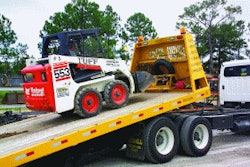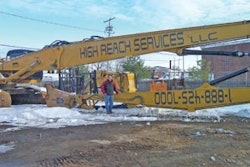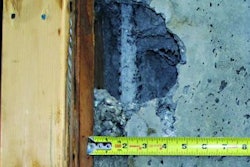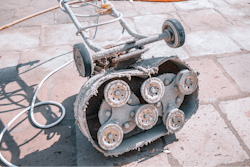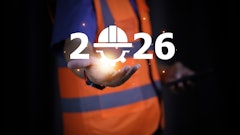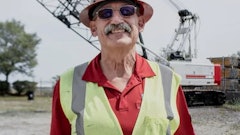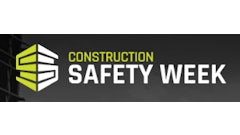
Written by George Ford
A new highly-controllable plasma rock breaking method is changing the way contractors, quarry operators and mining companies perform hard-rock excavation. The Plasma Method, developed by the KAPRA research consortium in South Korea, allows breaking of hard rock with less vibration, air blast, gas and dust than conventional blasting, and it's much faster and quieter than hydraulic or air hammers.
"The Plasma rock-breaking method has been used in South Korea for a number of years, but it is now catching on in other markets. In Korea it has been used for foundation excavation work in urban areas. Excavation proceeds while other work continues on the site, and people have normal access to adjacent streets and buildings. The operation can be tailored to accomplish the work safely in extremely tight quarters. We're excited about the prospects for this method in the US, where ever-tightening noise, environmental and transportation regulations are making conventional blasting more and more difficult."
The Plasma method is based on a variant of the thermite reaction used to weld steel railroad rails in remote areas. The method starts out with drilling of 2-inch diameter holes along the desired break line, Holes are typically about 10 feet deep. Cylindrical cartridges containing aluminum powder and copper oxide are loaded into the holes and the holes are stemmed. The cartridge leads are attached to a proprietary initiator (the "EPI machine"). Once the EPI has been charged (either by connection to local power or by a generator), the initiator delivers an instantaneous pulse of electricity to start the reaction. The aluminum and copper oxide react instantly to produce aluminum oxide and metallic copper along with thousands of joules of heat energy. The instantaneous heat creates expanding plasma within the drilled holes, breaking the rock. No toxic gases are generated, and the broken rock is inert, with only a little copper residue.
The method offers real advantages over conventional blasting. These include:
Vibration levels are typically a small fraction of those generated by explosives. Vibration frequencies cluster in the range of 50 to 120 Hz, well above the frequencies that typically produce damaging excitation of structures. Gas generation is minimal - there is no waiting for a clear atmosphere. Unfired cartridges are inert and do not represent a chemical or explosion hazard - muck removal starts immediately.The Plasma method is much faster than conventional breaking using hydraulic or pneumatic breakers, and it makes a lot less noise. Under favorable conditions it's possible to break several hundred holes per shift. Depending on the rock conditions, this means that up to several hundred cubic yards of rock can be processed each day by a single crew. Because the plasma is confined to the drilled holes, air blast is minimal, and can be further reduced with the use of blasting mats.
The Plasma cartridges are available in three sizes (1, 0.5 and 0.3 meters) so the breaking impulse can be adjusted to achieve the goal without excessive overbreak, noise or fragmentation. An added bonus - the cartridges are completely inert unless connected to the EPI, and so can be transported and stored without special precautions.
The new Plasma method of rock breaking is an important advance, and a great new tool to help the construction, building materials and mining industries keep their production up in the face of ever-tightening regulations.
George Ford, Project Manager AIS Construction




